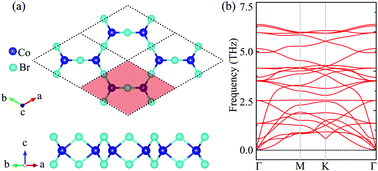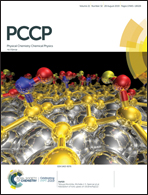Two-dimensional transition-metal halide CoBr3 with spin-polarized Dirac cone
Abstract
Recently, the discovery of two-dimensional transition-metal materials with non-trivial magnetic and electronic properties has spurred huge interest in investigating their applications in nanotechnology. Here, we report that the monolayer of CoBr3 possesses a quantum anomalous Hall insulating phase generated on the basis of first-principles calculations. We find that the CoBr3 monolayer is an intrinsic two-dimensional ferromagnetic material with a Curie temperature Tc = 264 K predicted from Monte Carlo simulations. The phonon spectra analysis indicates that the CoBr3 monolayer is dynamically stable. Taking into account spin–orbit coupling, this makes the electronic structure of the CoBr3 monolayer topologically non-trivial with a global band gap of 8.7 meV. The anomalous Hall conductivity calculation shows a Chern number C = 2, meaning the presence of a two edge state in nanoribbons of finite width. These findings not only add an experimentally feasible member to the quantum anomalous Hall insulator family, but also pave the way for highly promising application potentials in nanoelectronics and spintronics.



 Please wait while we load your content...
Please wait while we load your content...